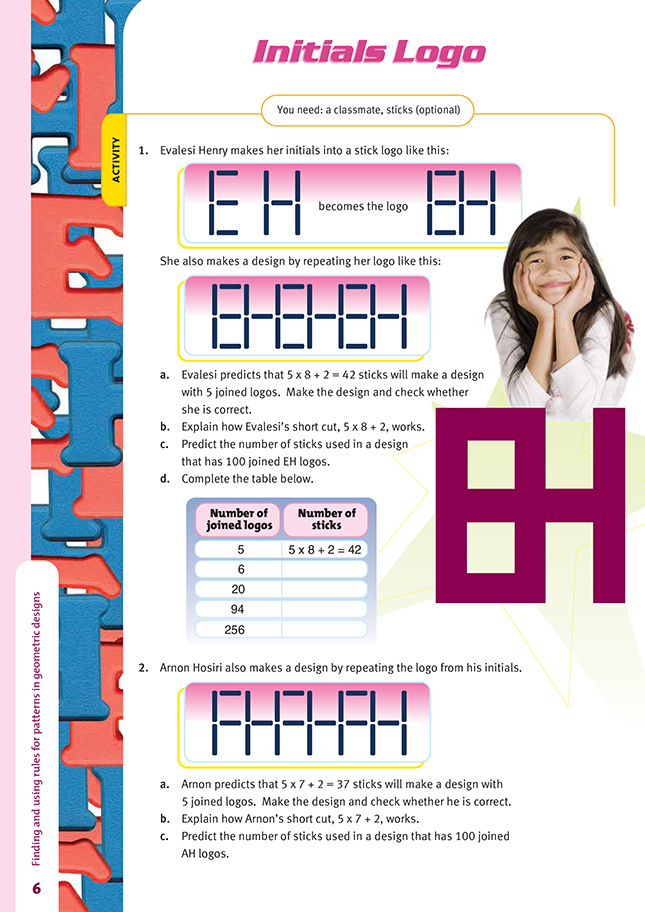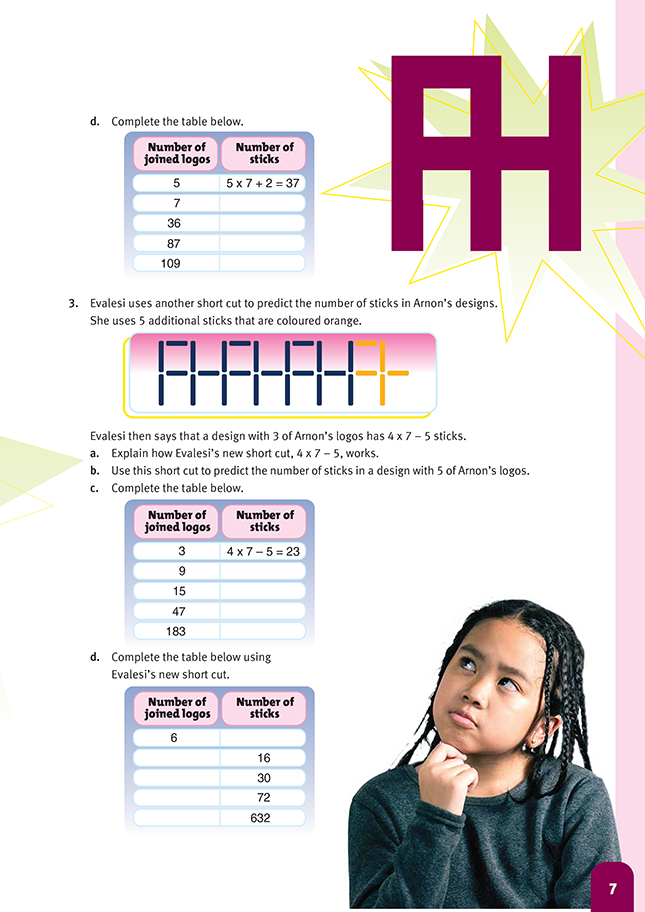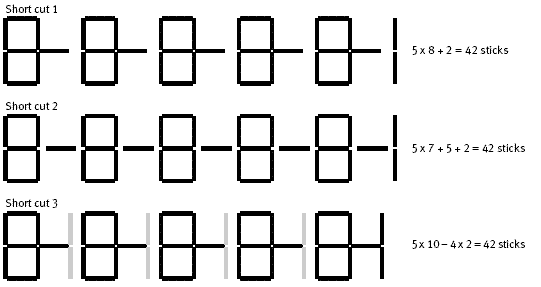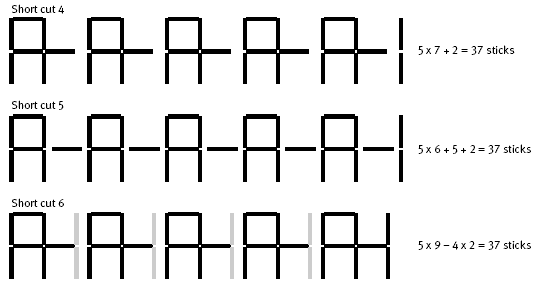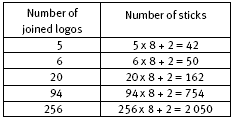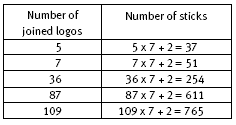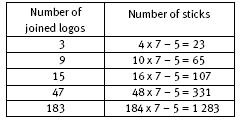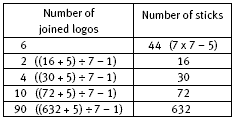This is a level 4 algebra strand activity from the Figure It Out series.
A PDF of the student activity is included.
Click on the image to enlarge it. Click again to close. Download PDF (145 KB)
use a table to find a rule for a geometric patter
write the rule for a relationship as a linear equation
FIO, Level 4+, Algebra, Book Four, Initials Logo, pages 6-7
classmate
sticks (optional)
In this activity, students use stick logo designs to find short-cut ways to work out the number of sticks needed for any number of joined logos.
In question 1, Evalesi Henry makes her logo by joining her initials, E and H, and then makes a design by repeating the initials five times.
There are several short-cut ways to count the number of sticks in the design above. Three ways, including the one shown in the Answers, are:
Notice that, in short cut 3, an additional 4 pairs of sticks (4 x 2 sticks) have been used to complete separate EH logos. They must be subtracted in the short cut because they are not part of the logo design. Each short cut above leads to a rule that can be applied to any design that repeats Evalesi’s EH logo in this way.
Although each rule is expressed initially in a different way, they all produce the same result for any given value of n. Therefore, the rules are equivalent. Note how the simplifying process produces 8n + 2 for each rule.
In questions 2 and 3, the AH logo produces similar results to those of the EH logo in question 1. In fact, by noticing that the AH logo has 1 stick fewer than the EH logo, any of the rules for Evalesi’s design can be adapted to apply to Arnon’s design.
Three short cuts to count the number of sticks in Arnon’s design, including the one shown in the Answers, are:
Note that, as with short cut 3 for Evalesi’s designs, short cut 6 has an additional 4 pairs of sticks (4 x 2 sticks) that have been used to complete separate AH logos. They must therefore be subtracted.
While some students may need a systematic tabulated approach before they can write these rules algebraically, others may realise very quickly that Arnon’s logo has 1 stick fewer than Evalesi’s and that, consequently, Evalesi’s rule, 8n + 2, becomes 7n + 2 for Arnon’s design. (As in Evalesi’s case, each of Arnon’s rules can
be simplified to the same rule, as shown above.)
Students who are able to work with this level of algebra may want to design initial logos of their own. They may even like to try working backwards by making logo designs from algebraic rules such as 4n + 3, 6n + 1, and so on.
Question 3d requires the students to use Evalesi’s short cut, (n + 1) x 7 – 5, to work backwards from the number of sticks to the number of logos.
In general, for n logos, a forwards-and-backwards flow chart will look like this:
So, for example, when the number of sticks is 16, we have:
So 16 sticks give 2 logos.
The short cuts above lead initially to different rules that can all be applied to any design that repeats Arnon’s AH logo in this way.
Answers to Activity
1. a. This design with 5 joined logos has 42 sticks, so Evalesi is correct.
b. The logo design can be divided into 6 parts. 5 parts are identical and have 8 sticks each. The last part has 2 sticks. So there are 5 x 8 + 2 sticks altogether.
c. 100 x 8 + 2 = 802 sticks
d.
2. a. This design with 5 joined logos has 37 sticks, so Arnon is correct.
b. The logo design can be divided into 6 parts. 5 parts are identical and have 7 sticks each. The last part has 2 sticks. So there are 5 x 7 + 2 sticks altogether.
c. 100 x 7 + 2 = 702 sticks
d.
3. a. Using the 5 orange sticks enables Evalesi to see 4 sets of 7 (the normal repeat in the design) or 4 x 7 sticks. The 5 orange sticks are not part of the design and must be removed. So the design has 4 x 7 – 5 = 23 sticks.
b. 6 x 7 – 5 = 37 sticks
c.
d.
